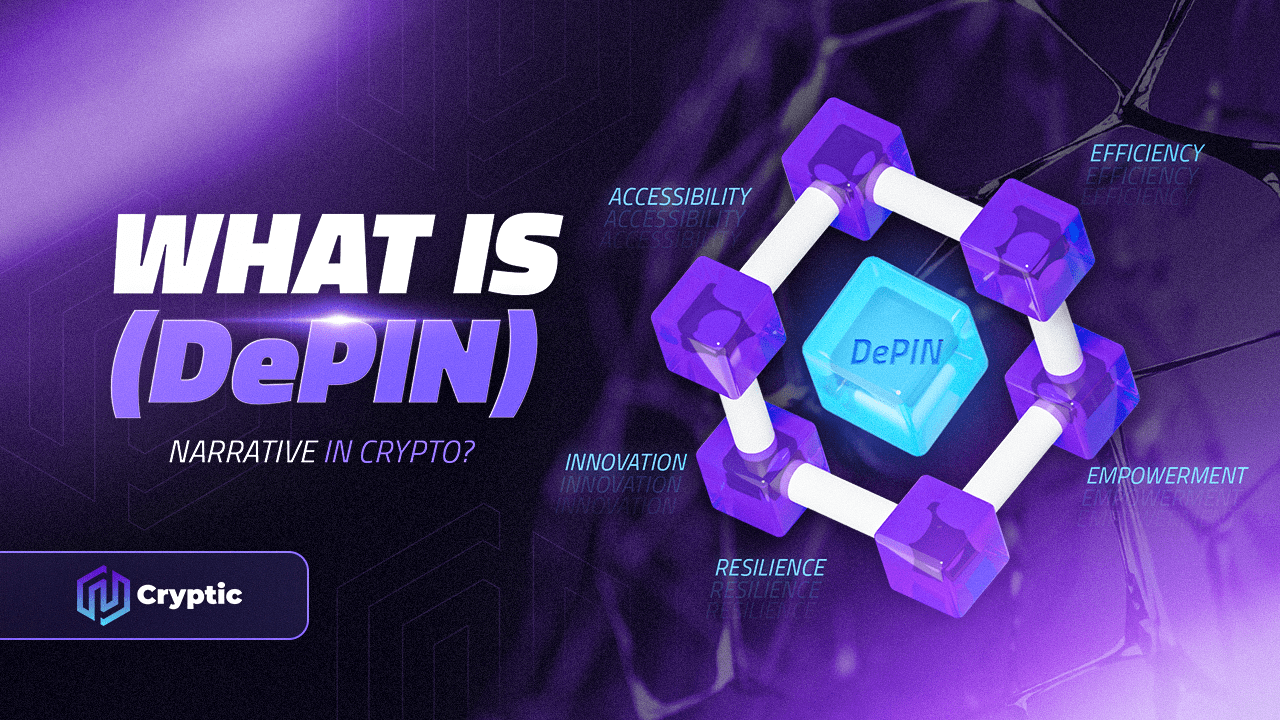
Decentralized Physical Infrastructure Networks (DePINs) are emerging as a groundbreaking solution to the age-old challenges of infrastructure development and resource allocation. By harnessing the power of blockchain technology and tokenization, DePINs enable individuals and communities to contribute and share physical resources in a trustless and transparent manner.
What are DePINs?
At their core, DePINs are networks that leverage blockchain technology to create decentralized marketplaces for physical resources. These resources can range from computing power and storage capacity to energy generation and wireless connectivity. Unlike traditional infrastructure models that rely on centralized control and ownership, DePINs empower individuals to become active participants in the provisioning and utilization of essential resources.
How DePINs Work
DePINs operate on a simple yet powerful principle: incentivization through tokenization. Participants who contribute their resources to the network are rewarded with cryptocurrency tokens, which can be used to access resources provided by others. This creates a self-sustaining ecosystem where individuals are motivated to contribute their resources in exchange for tokens, which in turn can be used to meet their own resource needs.
The blockchain serves as the backbone of DePINs, ensuring transparency, security, and immutability of transactions. Smart contracts automatically execute agreements between providers and consumers, eliminating the need for intermediaries and reducing transaction costs.
Advantages of DePINs
DePINs offer several key advantages over traditional infrastructure models:
-
Accessibility: DePINs make resources more accessible to individuals and communities, especially in underserved areas where traditional infrastructure may be lacking or unaffordable.
-
Efficiency: By directly connecting providers and consumers, DePINs eliminate inefficiencies associated with centralized intermediaries, resulting in lower costs and faster resource allocation.
-
Resilience: The decentralized nature of DePINs makes them more resilient to failures and disruptions than centralized systems.
-
Empowerment: DePINs empower individuals to become active participants in the provisioning and utilization of resources, fostering a sense of ownership and community participation.
-
Innovation: The open and permissionless nature of DePINs encourages innovation by allowing anyone to contribute new resources or develop novel applications on top of the network.
Challenges and Considerations
While DePINs hold immense promise, they also face several challenges and considerations:
-
Scalability: As DePINs grow in size and complexity, ensuring scalability and maintaining network performance becomes crucial.
-
Security: DePINs must implement robust security measures to protect against cyberattacks and ensure the integrity of transactions.
-
Regulation: The regulatory landscape for DePINs is still evolving, and clear guidelines are needed to foster innovation while protecting consumers and ensuring fair competition.
-
Adoption: Widespread adoption of DePINs requires overcoming technical barriers, educating users, and building trust in the technology.
Real-World Applications
DePINs are already being explored and implemented in various domains:
-
Energy: DePINs can enable peer-to-peer energy trading, where individuals can sell excess energy generated from solar panels or other sources directly to consumers.
-
Connectivity: DePINs can create decentralized wireless networks, providing affordable internet access in remote or underserved areas.
-
Cloud Computing: DePINs can leverage idle computing resources from individuals and businesses to create decentralized cloud computing platforms.
-
Storage: DePINs can facilitate decentralized storage solutions, offering secure and private alternatives to centralized cloud storage providers.
The Future of DePINs
DePINs can potentially revolutionize how we think about and interact with physical resources. By decentralizing control and ownership, DePINs can create a more equitable, efficient, and resilient infrastructure for the future. As technology continues to advance and adoption grows, DePINs are poised to play a significant role in shaping the next generation of resource-sharing networks.
Additional Insights
-
DePINs are closely related to the broader concept of Web3, which envisions a decentralized internet where users have greater control over their data and online interactions.
-
DePINs are often associated with the sharing economy, which leverages technology to enable peer-to-peer exchange of goods and services.
-
The development of DePINs is still in its early stages, but the potential impact on various industries and sectors is significant.
Conclusion
DePINs represent a paradigm shift in approaching infrastructure development and resource sharing. By harnessing the power of blockchain technology, DePINs can empower individuals and communities to participate in a more equitable, efficient, and resilient resource ecosystem. As technology matures and adoption grows, DePINs have the potential to transform the way we live, work, and interact with the world around us.
I hope this expanded article provides a more comprehensive overview of DePINs. Please let me know if you have any other questions.

